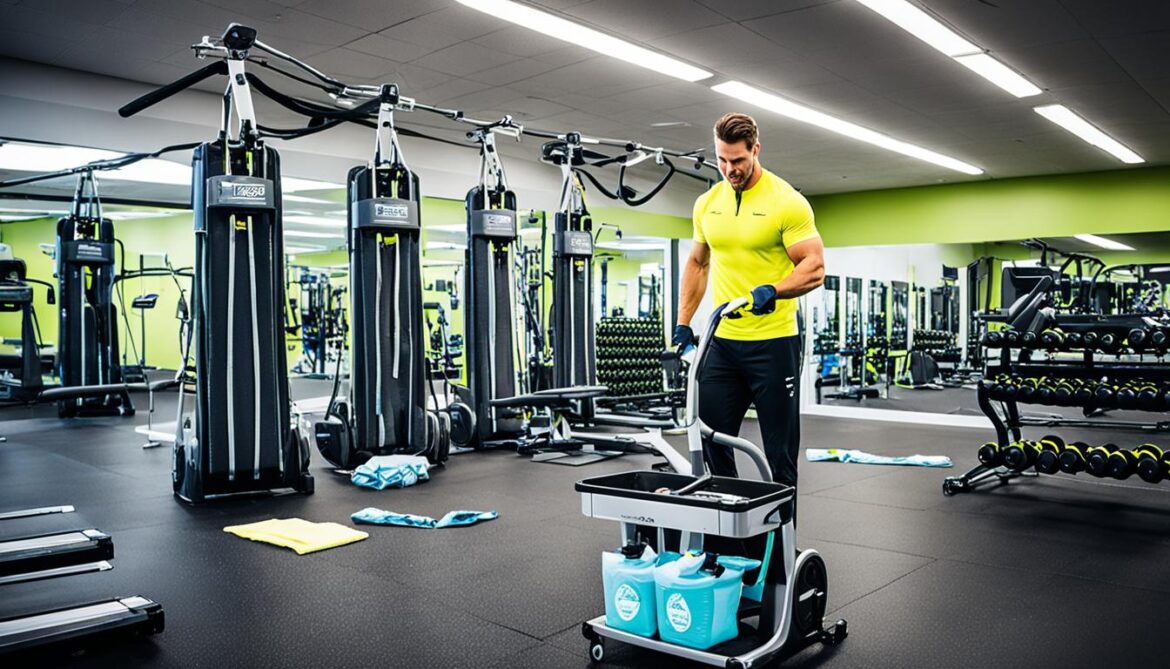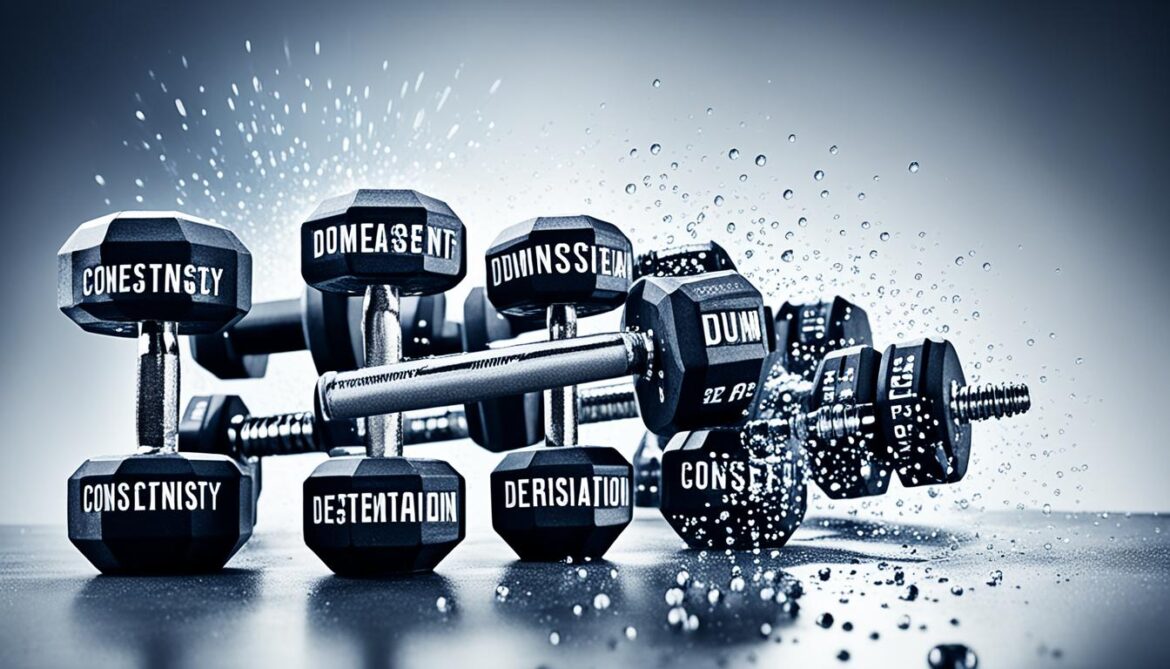Getting fit means we need to stick to our health goals. Accountabilty is essential for either losing weight, gaining muscle, or getting fitter. It helps us keep going, see how far we’ve come, and achieve what we set out to do.
Use tools like Fitbits or smartwatches to keep an eye on your progress. These gadgets allow us to check how active we are, set targets, and see our journey. They give real-time info, helping us to stay the course and adjust as needed.
Finding an accountability buddy is another good move. This could be anyone with similar health aims, like a friend or a coworker. Working together boosts motivation and support. Your buddy can cheer you on, offer advice, and you two can do fun fitness stuff together.
By using tracking tools and having a fitness pal, we up our chances of hitting our fitness goals. They ensure we always remember what we’re aiming for. Thanks to these tactics, taking control of our fitness story gets easier!
Key Takeaways:
- Progress tracking tools like Fitbit or smartwatches help us monitor our activity levels and stay on track towards our health goals.
- An accountability buddy can provide support, motivation, and guidance throughout our fitness journey.
- Using both progress tracking tools and an accountability buddy can significantly increase our chances of achieving fitness success.
- By holding ourselves accountable, we stay committed to our health goals and make positive changes in our lives.
- Integrating accountability into our routine ensures that our fitness goals remain a priority and boosts our chances of long-term success.
The Benefits of Having an Accountability Buddy
When it comes to reaching your fitness goals, an accountability buddy is key. This person supports, motivates, and guides you. Having an accountability buddy has several perks.
- Motivation: Your buddy will cheer you on when things get hard. They know the challenges and encourage you to keep going.
- Goal Planning: They help map out how you’ll hit your fitness targets. You both can set goals, make a timeline, and find ways to reach those goals.
- Perspective: Sometimes you miss seeing your own progress. An accountability buddy can point out your wins and keep your spirits high.
- Staying on Track: With a busy life, you might stray from your fitness plan. But, they keep you focused and help you get back on track if you veer off.
- Valuable Advice: Your buddy shares tips from their own journey. They help with advice and tricks, and guide you through any obstacles.
- Sense of Community: Working together creates a strong support system. Celebrate wins, face challenges, and go through all the fitness highs and lows together. This friendship can really boost both of you.
With them, you have a cheerleader, a guide, and someone to keep you sharp on your goals. The support from an accountability buddy is huge. So, don’t wait to find yours and start the journey together!
Success Story: Jane and Sarah
“Sarah being my buddy has really changed the game. She motivates me, helps with meal plans, and keeps me sane when things are too much. It’s great having someone who gets my struggles and celebrates wins with me. Together, we achieved success we couldn’t reach alone.”
Conclusion
Tracking your progress and having a friend to keep you accountable are key to hitting your fitness targets. They help you stay focused and reach your health objectives.
Being accountable matters a lot in staying motivated and making healthy life changes. You can do this by using tools to track yourself or by keeping a journal. Both methods are essential for a successful fitness path.
Teaming up with a buddy who holds you accountable can really boost your success. Your accountability partner offers encouragement, helps with planning, and shares tips. This is all based on what they’ve learned through their own journeys.
So, use tools for progress and link up with a buddy who has similar goals. This combination can be powerful in helping you achieve long-lasting health wins. Keep in mind, getting fit is totally doable with the right support!
FAQ
How does accountability help in achieving health goals?
Accountability is key for hitting health goals. It can come from outside, like checking with a friend. Or inside, by keeping track in a journal. Staying responsible makes a big difference on the path to fitness.
What are progress tracking tools and how can they help in meeting exercise goals?
Tools like Fitbit or smartwatches help keep you on top of your exercise targets. They track your progress, which keeps you motivated. This can lead to making good changes in your life.
How can public accountability provide motivation and support?
Telling others on social media about your goals can push and help you. Sharing your goals openly encourages you to stick with them. Plus, it brings in cheers and support from others.
What does Gretchen Rubin say about accountability in forming healthy habits?
Rubin, writer of “Better Than Before,” highlights how crucial accountability is. It keeps you focused on your objectives. And, it lays the ground for making changes that last.
How do studies show the effectiveness of accountability in goal achievement?
Research proves that partnering with others on your goals boosts success. Regular check-ins increase your chances of making it. Support from someone watching over your progress is a key motivator.
How can an accountability buddy enhance your chances of reaching fitness goals?
An accountability buddy ups your likelihood of success in fitness. They push you when the going gets tough. They keep you steady and provide helpful advice and guidance.
What benefits does an accountability buddy offer?
Your buddy helps create a solid plan. They view your progress from a fresh angle. They remind you what you’re working towards. And they’re there to nudge you back if you stray, sharing wisdom from their own experiences.
How does working with an accountability buddy create a sense of community and support?
Having a buddy forms a small support community, especially if you have similar goals. It connects you with someone who understands and cheers you forward. This makes your shared journey more encouraging.




















